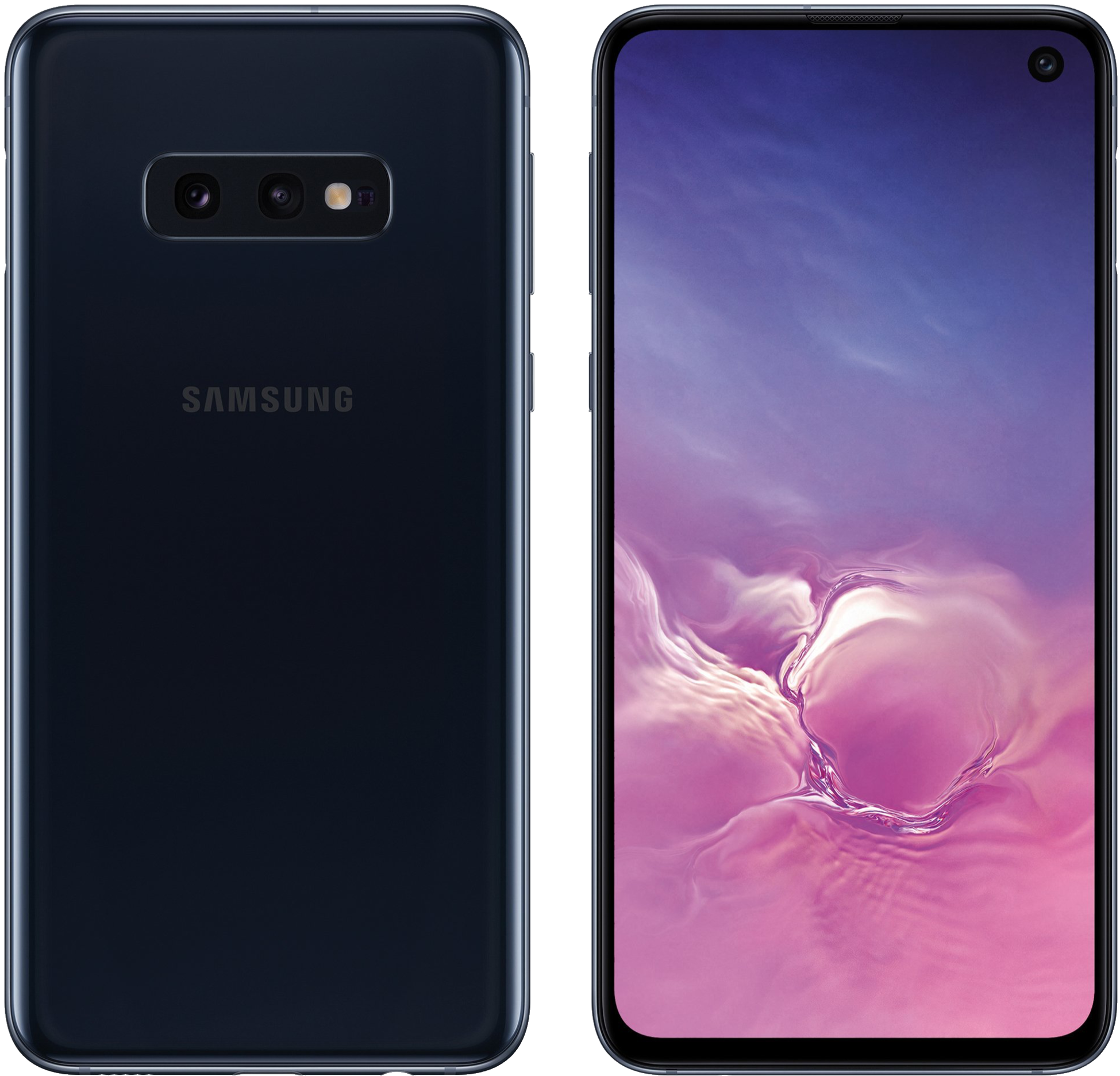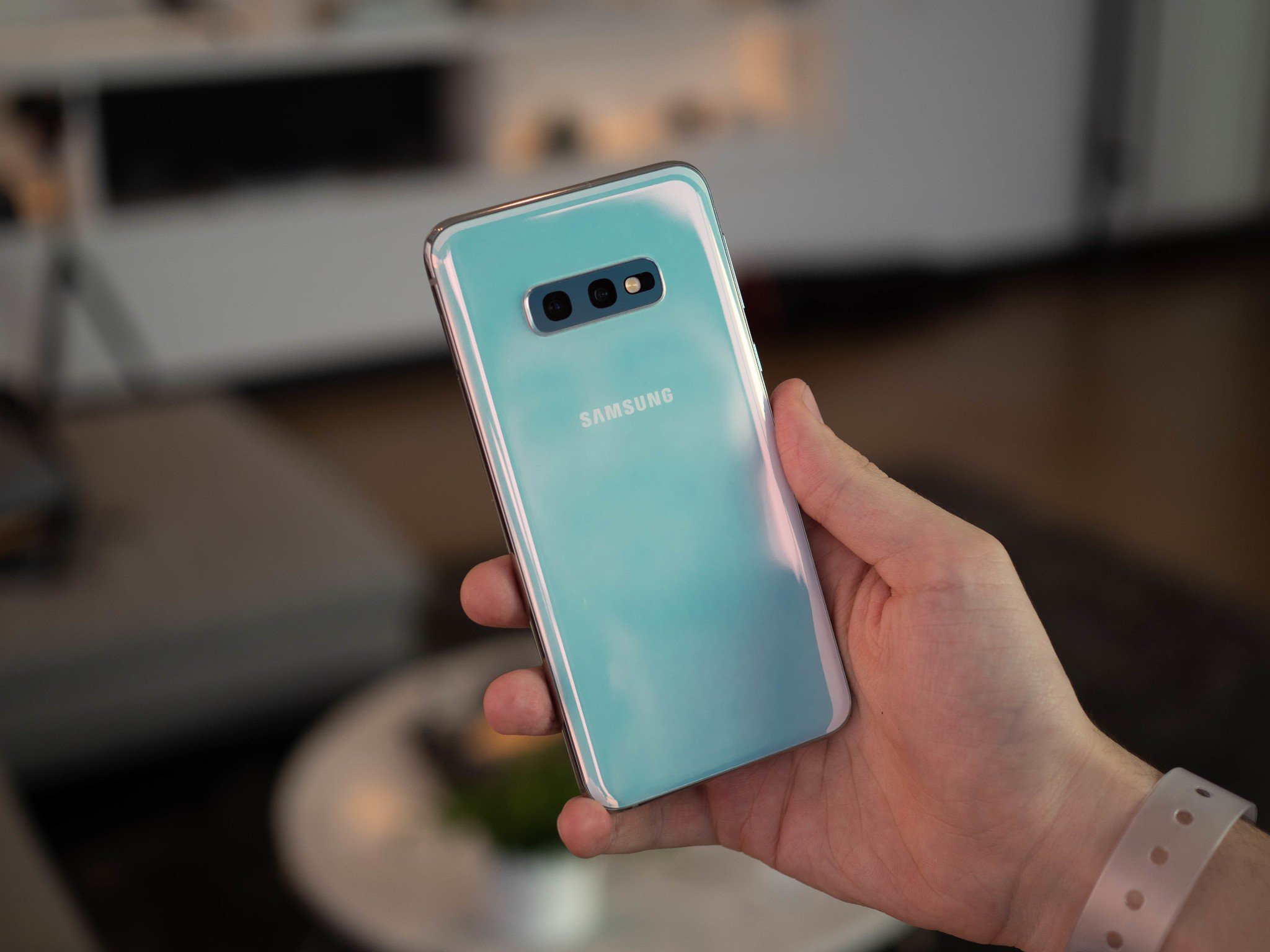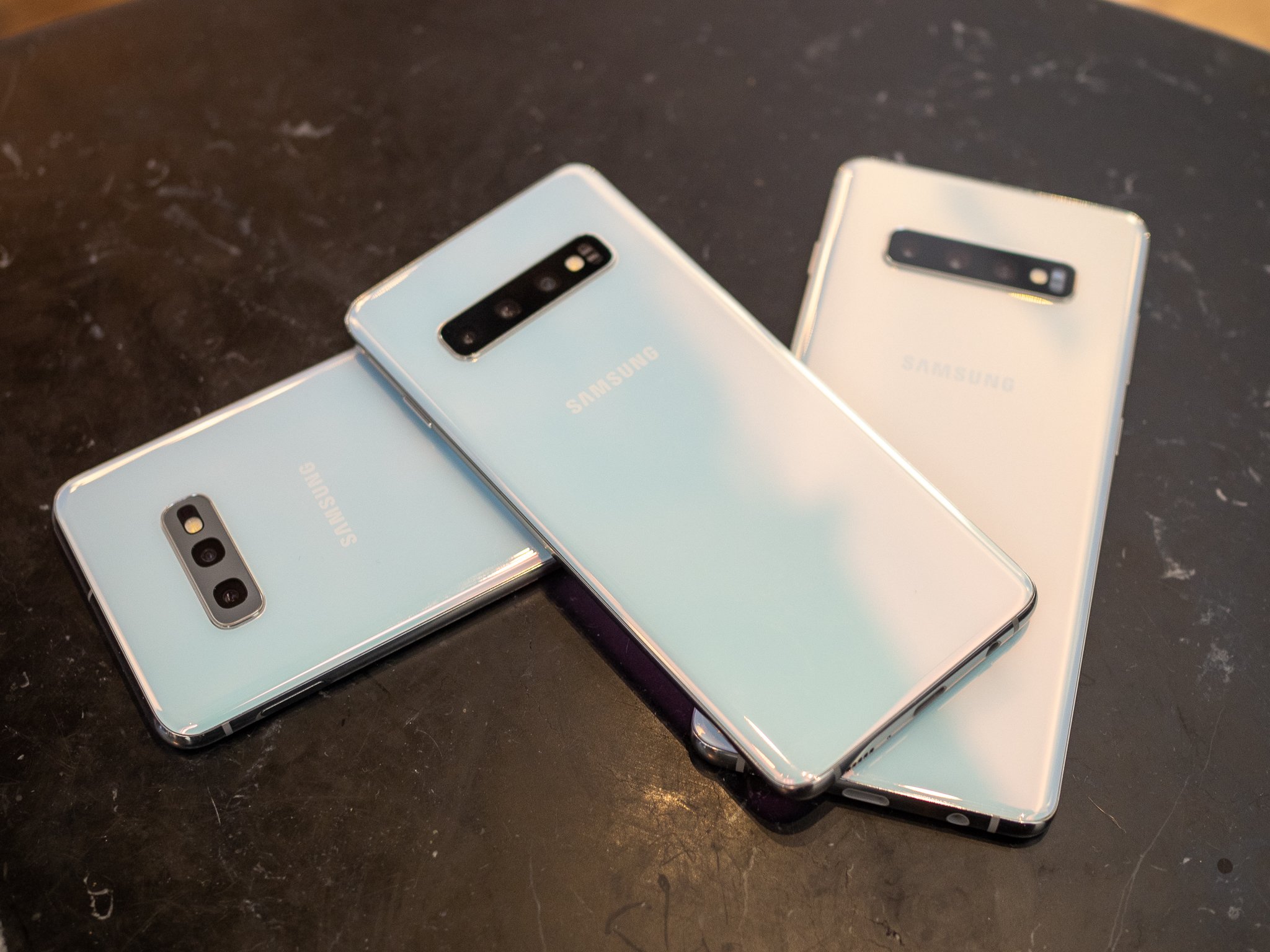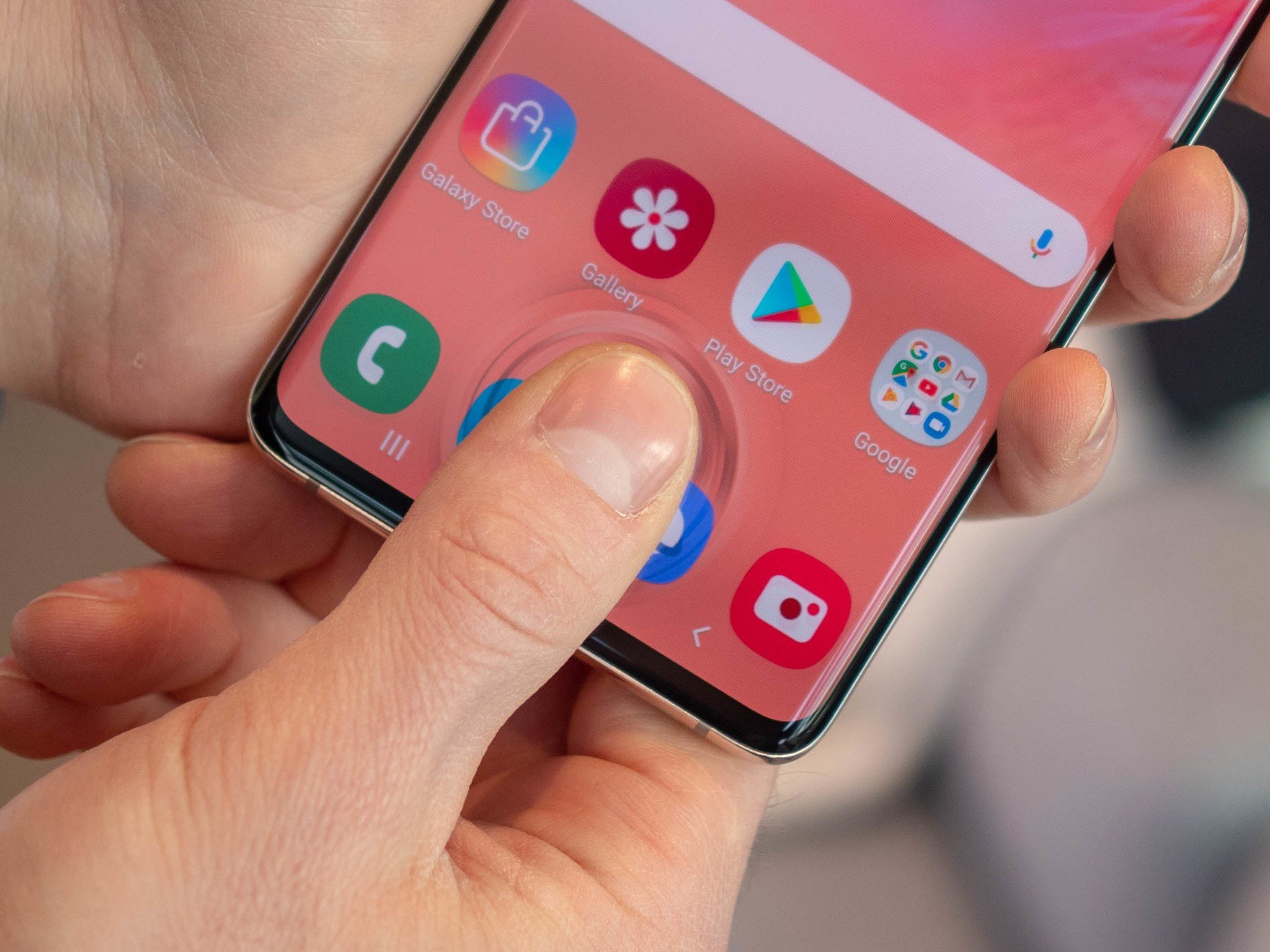If you're looking for helpful advice/tips on Android phones from knowledgeable, trustworthy people, Android Central is for you. We spend countless hours testing all of the latest devices to make sure you buy the tech that's right for your life.
Samsung Galaxy S10
The true flagship
Pros
- Larger, higher-res AMOLED display
- In-screen fingerprint sensor
- Three rear cameras
- 8GB of RAM
- Slightly bigger battery
Cons
- Not everyone likes curved displays
- Costs $150 more
Samsung's outfitted the Galaxy S10 with everything you could ask for in a 2019 flagship. It's got a curved AMOLED display, three rear cameras, in-screen fingerprint sensor, and even staples like expandable storage and a headphone jack.
Samsung Galaxy S10e
Better value
Pros
- Snapdragon 855 processor
- Flat, non-curved display
- Gorgeous design
- Expandable storage
- 3.5mm headphone jack
Cons
- Only has two rear cameras
- Less RAM
If you're OK with having a non-curved display, just two rear cameras, and a side-mounted fingerprint sensor instead of an in-screen one, the S10e is for you. Aside from those few changes, it has pretty much everything that the regular S10 does while costing $150 less.
With the Galaxy S10 and S10e, Samsung's crafted two phenomenal handsets that cater to two different customers. If you want a flagship Android phone that pulls out all the stops and delivers the best possible experience, you'll want to splurge for the S10. On the other hand, if you'd like to save $150 and get a device that favors practicality over flashiness, you'll be happier with the S10e.
Two great phones that are more similar than you'd think
This year, Samsung did something different with its Galaxy S lineup. In addition to the base model (the S10) and a larger, more expensive version with slightly better specs (the S10+), we also got a variant that scales back on a few features to come in at a more affordable price. That device is the Galaxy S10e, and when compared to the S10, it's surprising just how much of the flagship experience Samsung was able to retain while lowering the starting price by $150.
First thing's first, let's talk about what the S10 and S10e have in common.
Both phones are powered by Qualcomm's Snapdragon 855 processor, have AMOLED displays, a 10MP front-facing camera, and feature ultra-premium glass and aluminum designs that are available in a few different colors.
The phones also share expandable storage via a microSD card, a 3.5mm headphone jack, wireless charging, a new feature called Wireless PowerShare that allows the phones to wirelessly charge other Qi-enabled devices, and NFC + MST technology for Samsung Pay.
| Galaxy S10 | Galaxy S10e | |
|---|---|---|
| Operating System | Android 9 Pie Samsung One UI |
Android 9 Pie Samsung One UI |
| Display | 6.1-inch Quad HD+ Curved Dynamic AMOLED 93.1% screen-to-body ratio 19:9 |
5.8-inch Full HD+ Flat Dynamic AMOLED 91.6% screen-to-body ratio 19:9 |
| Processor | Qualcomm Snapdragon 855 | Qualcomm Snapdragon 855 |
| Rear Camera 1 | 12MP main sensor f/1.5 - f/2.4 Optical image stabilization |
12MP main sensor f/1.5 - f/2.4 Optical image stabilization |
| Rear Camera 2 | 16MP ultra-wide sensor f/2.2 Fixed focus |
16MP ultra-wide sensor f/2.2 Fixed focus |
| Rear Camera 3 | 12MP telephoto sensor f/2.4 Optical image stabilization |
N/A |
| Storage | 128GB or 512GB MicroSD card up to 512GB |
128GB or 256GB MicroSD card up to 512GB |
| RAM | 8GB | 6GB |
| Battery | 3,400 mAh | 3,100 mAh |
| Security | In-display ultrasonic fingerprint sensor | Side-mounted fingerprint sensor |
There are obviously a few key differences, but they're not as drastic as you might think.
While both phones have AMOLED displays, the S10's is a curved one with a Quad HD+ resolution. With the S10e, you get a flat screen at a slightly lower Full HD+. Curved displays certainly look cool, but we know a lot of people have been eager for Samsung to start making phones with flat ones. If you're among them, that could be reason enough to go for the S10e over the S10.
On that note, the regular S10 does something pretty cool by embedding a fingerprint sensor underneath its screen. It uses Qualcomm's new Ultrasonic Fingerprint Scanner technology that scans and creates a 3D image of your fingerprint — making it faster and more secure than other in-screen sensors we've seen on phones like the OnePlus 6T.
Despite the difference in price, the S10e shares a lot of important features and specs with its more expensive sibling.
The Galaxy S10e lacks this tech and instead sees its fingerprint sensor being integrated into the power button. While not as futuristic or flashy, this could actually be a benefit for some people as there's currently a bit of wonkiness with the way tempered glass screen protectors work with the S10's in-screen sensor.
Another big difference is that the S10 has three rear cameras whereas the S10e has only two. Both phones share the same primary and ultra-wide sensors, but the S10 also features a telephoto lens that allows you to get a 2x optical zoom.
Smaller differences between the two phones include 8GB of RAM on the S10 and 6GB on the S10e, a max of 512GB of internal storage compared to 256GB, and a 3,400 mAh battery on the S10 while the S10e has a slightly smaller 3,100 mAh unit.
Galaxy S10
The true flagship
All the power, style, and features you could ask for.
Yes, it's expensive, but the Galaxy S10 is undoubtedly one of the best Android phones you can buy in 2019. The AMOLED display is better than ever, its three rear cameras offer a lot of flexibility, and the in-screen fingerprint sensor is one of the best we've ever seen. If you want a phone that does it all, get the S10.
Galaxy S10e
Not as expensive
A cheaper alternative to the regular Galaxy S10.
You may think that the Galaxy S10e cuts a lot of corners to be $150 cheaper than the regular S10, but that simply isn't the case. It's got the same processor, a gorgeous display, and a premium design. So long as you're OK with two rear cameras and a flat display, you can't go wrong here.





0 Response to "You Can See More: Galaxy S10 vs. Galaxy S10e: Which should you buy?"
Post a Comment